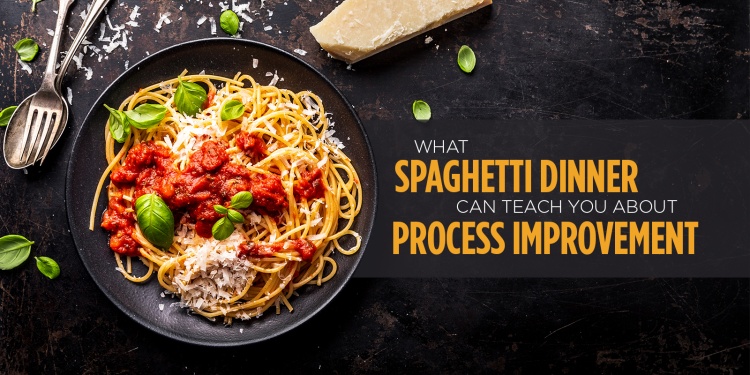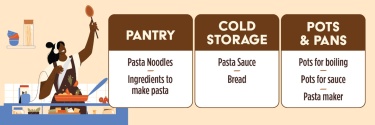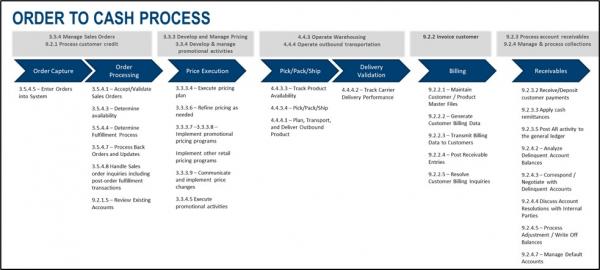
Process models take a variety of forms, and while I will not address them all, the two aspects of process modelling we see most often come in the form of process documentations (process maps, knowledge maps, RACI, SIPOC, etc.) and process frameworks. However, lets agree that regardless of what form you or your organization use, the goal of the model is to define and standardize what our organization does.
Think of the model as your kitchen. You have your kitchen organization in the manner that makes the most sense to you (and/or your family). The perishable items are in the refrigerator, the shelf stable items are in the pantry, the silverware is in “the silverware drawer,” and the cooking pots and pans are stored together. In other words, the components make dinner are grouped together or stored by their category and then assembled to execute making dinner—like how a framework supports the creation of a process model.
Now, let’s say that we have a process model for making spaghetti for dinner this evening (simplified greatly).
In my house – we have teenagers that are coming and going and eating at all hours, so we cheat a little. We boil the noodles, bake the garlic bread, heat up with sauce, and pretty much call that dinner. However, other houses may take pasta more seriously. There are households that might make their own pasta, make their own pasta sauce, and even make their own bread. The goal of the process model is that the everyone executing a process is outlined in the model and can be applied to the implementation of the process.
One or our most popular downloads each year is the APQC Process Classification Framework® (PCF). The PCF is a hierarchical decomposition that organizes and describes the work an organization does in terms of process groups, processes, and activities. Using the PCF for model development allows executives and managers to visualize the complex network of activities they are trying to understand, manage, and improve.
If we apply the PCF to create an Order-to-Cash process, it might look like the following. But it also might look different, depending on how the organization executes the Order-to-Cash process. However, the goal is that the framework was used to create standard process that created a common language across the businesses.
All process models have a variety of uses, and we have completed many research articles and training classes on their applications. Below are a few of our favorites.
- The Building Blocks of Process Management Maturity: Process Models
- Building Process Maps: How to Use a Process Classification Framework
- Knowing the Difference: Process Frameworks, Maps, and Models
Additionally, we have a few training courses available that you might find interesting as well.
But I will leave you with this; how are you using process models within your organization?


